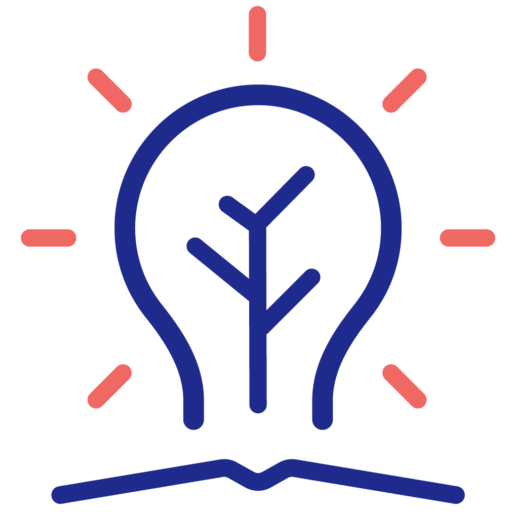
Let me start with a confession: I find writing hard. Not in a romantic “tortured artist” way, but in a deep, frustrating, occasionally confidence-wrecking way. For years, I believed I had to fully understand what I wanted to say before I could write anything at all. I’d spend days constructing the perfect argument in my head, only to find that when I finally sat down to write, it was hard to weave the threads together. Back tensed, breath held (am I the only person who has to remind myself to breathe when I am writing?), the ideas felt less compelling than they did in thought. And I’d inevitably walk away from the screen, discouraged.
It took a long time to realise I’d been thinking about writing backwards.
As qualitative researchers, we are often taught to plan before we produce. Outline your argument. Build your research design. Complete your analysis—and only then, start writing. But here’s the secret that experienced researchers learn over time: some of your best analytical insights will come after your fingers hit the keyboard. Writing isn’t the end of analysis, it’s a fundamental part of it.
In fact, one of the most powerful tools for deepening your qualitative analysis is writing before you feel ready.
Writing is Thinking
In qualitative research, we sit with complex, layered, and often contradictory data. You’ve coded the transcripts. You’ve constructed your themes. You’ve reviewed, refined and reflected. But how do these elements become rich and compelling findings? Often, the answer lies not in returning to the analysis, but in exploratory writing.
Writing helps us clarify connections that we sense but haven’t fully articulated. When we begin to write—even in rough, informal forms—we start to think on the page. We test ideas. We confront contradictions. We realise what holds together and what doesn’t. And in that process, meaning is created.
This is not just a productivity tip. It’s a philosophical position. It aligns with interpretivist and constructivist paradigms that view knowledge as co-constructed, iterative, and emergent. Writing becomes a method of inquiry, not just a mode of reporting.
Drafting as Iteration, Not Finality
Many researchers delay writing because they believe they must first have fully formed themes, theory or structure. But qualitative research is inherently iterative. Just as your interview questions evolve and your coding deepens, so too should your writing.
Early drafts don’t need to be polished. They might begin as “thinking drafts” or loose memos: Why does this theme feel important? What connects these pieces of data? What tensions am I noticing?
These drafts help you:
- Clarify the story your data is telling
- Spot misalignments between your research question and findings
- Identify what needs more evidence or theoretical grounding
- Generate new questions or insights
And yes, they might be messy. But mess is where creativity lives.
Paradigmatic Alignment through Writing
Writing early also reinforces design coherence. Coherence, after all, isn’t just about aligning your question with your methods—it’s about reflecting your epistemological position in the way you write.
Are you working within a constructionist paradigm? Then your writing should take an interrogatory stance, surfacing embedded assumptions, questioning taken-for-granted truths, and reflecting on positionality. If your theoretical perspective is interpretivist, is your writing prioritising participants’ own terms of meaning and attending to how their sense-making is shaped by their social, cultural, and historical contexts? Writing helps ensure alignment between your research question, theoretical perspective, and analytic approach—clarifying not just what you are saying, but how and why you are saying it.
Axiology: Writing Your Values
Qualitative research is never value-neutral. Axiology—the study of what we value—runs through every design choice we make. Writing is no different.
Early writing can help you reconnect with the why of your research:
- What kind of knowledge are you trying to produce?
- Whose realities are you representing, and why?
- What social, cultural, or practical change do you want this work to support?
You don’t need a beautifully worded paragraph to explore those questions. You just need to begin by putting them on the page, honestly and imperfectly. That’s where clarity begins.
From Memo to Manuscript
If you’re keeping reflexive memos (and I hope you are!) those memos aren’t separate from your writing. They are your writing. They’re part of the interpretive journey.
The moment that frustrated you in your transcript? It might later form a crucial element in a theme. The memo you wrote after that tough interview? It might become central to your discussion section.
Memoing and drafting are not sequential—they’re parallel, so learning to move between them fluidly is a skill worth developing. A memo on ‘conflicting definitions of care’ might help shape the theme ‘care as a contested terrain,” with memo quotes becoming analytic claims. This movement—from informal reflection to formal writing—isn’t a shortcut; it’s the process.
Perfectionism is the Enemy of Insight
Perfectionism tells you that you can’t write until you have everything figured out. Insight, however, often comes through the writing—not before it.
Waiting to write until you feel ready can lead to paralysis. You’ll never feel fully ready. And if you do, you’ve probably waited too long. The urgency, the spark, the questioning—all those rich analytic instincts—might have dulled.
So don’t write after your analysis. Write through it. You won’t use every draft. You’ll revise heavily. But your thinking will deepen, your arguments will sharpen, and your findings will grow clearer.
Final Thought: Trust the Process
Writing before you’re ready isn’t a flaw in your process—it is the process. It means you’re engaged, reflective, and willing to think with each word you put to paper. And in doing so, you model what qualitative inquiry is really about: depth, honesty, complexity, and connection to the process.
So if you’re stuck—good. That’s the perfect place to begin. Open a blank document and start writing. Start with a quote. An insight. A contradiction. A feeling. Let the words lead you…….


0 Comments